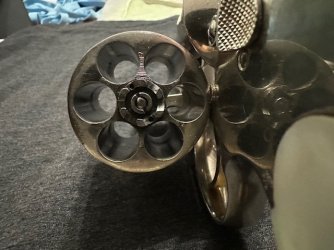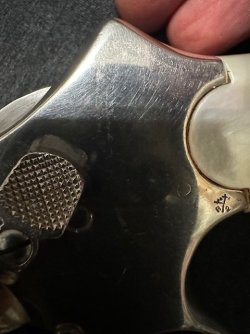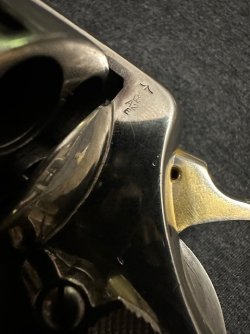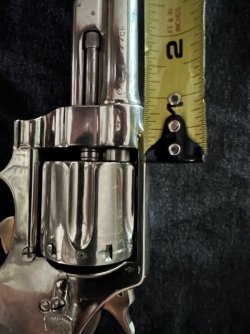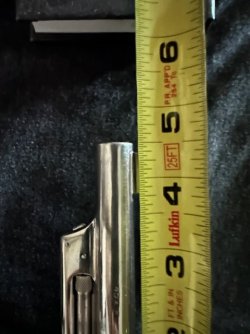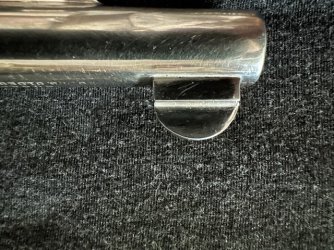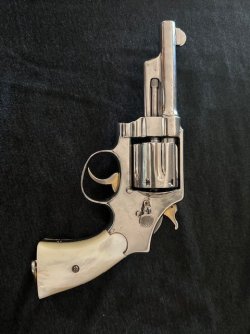
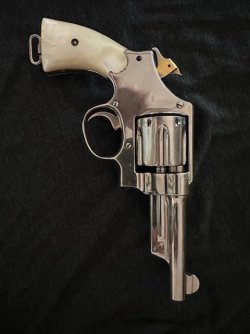
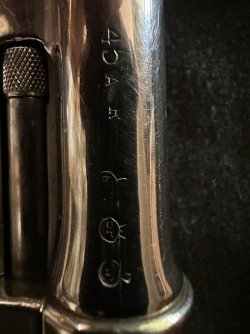
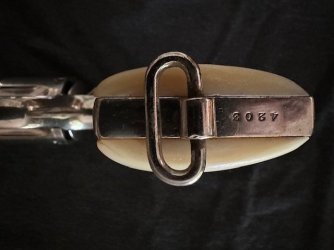
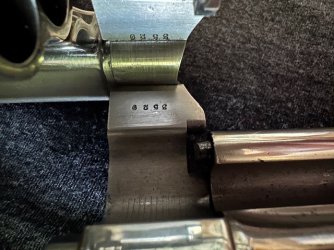
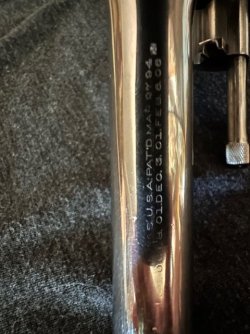






I bought this pistol on an online auction recently.
It was listed as a hand ejector triple lock first model,
converted to .455 mark II webley. 4.5” barrel.
Lots of markings that I assume are British.
Do you think it has been re-finished?
Where these commonly converted by various individuals
or sent to the factory. I have the original grips, but it came
with these cool pearl ones, so I had to try them out.
What would guess the shipment date would be?
Thanks for any information you could provide - - - New Guy

